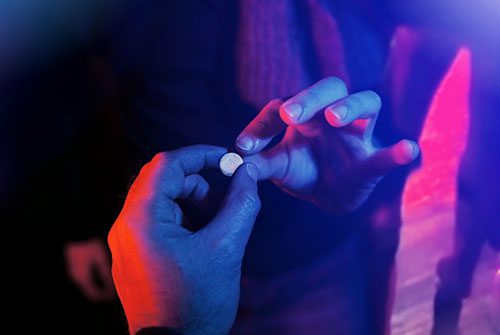MDMA – the chemical name for the recreational drug ecstasy – has a wide range of mental and physical effects. Its short-term effects include a spike in energy and alertness and a euphoric increase in aural and visual perception. Users also feel ‘warm & fuzzy’ – short-term feelings of affection and attachment are common. The ‘comedown’ of MDMA, however, brings with it feelings of anxiety, confusion, and, in extreme cases, psychosis.

It is a delicate balance and one that shouldn’t be taken lightly. That said, the Food and Drug Administration (FDA) has a long-standing interest in the positive effects of the drug. This interest has led to a desire to incorporate the regulated use of the substance as a way to treat victims suffering from Post-Traumatic Stress Disorder (PTSD).
Last week, the Multidisciplinary Association for Psychedelic Studies (MAPS) made a big announcement, announcing the FDA’s labeling of the therapeutic use of MDMA as “Breakthrough Therapy.” The FDA stated that “preliminary clinical evidence indicates that the drug may demonstrate substantial improvement over existing therapies.” In summary, the FDA publically announced that the results coming from multiple peer-reviewed clinical trials have endorsed and supported the applicability of MDMA as a treatment drug for PTSD.

It can be inferred from the above statement that developments in the search for a safe, clinical application for MDMA will be moving at a much quicker pace moving forward. Scientific trials will now be conducting Phase 3 experiments, a process that involves multiple research teams, utilizing modern, randomized, and placebo-controlled testing techniques. Three separate doses of the drug will be utilized in tandem with psychotherapeutic techniques in an effort to test its effectiveness. This development very clearly portrays the seriousness with which the US government and medical services are viewing MDMA as therapy.
When it comes to treating dire and debilitating conditions, the FDA has a reputation for its willingness to try cutting-edge techniques. This can be seen by the recent use of a gene-editing technique, the goal of which is to contend with a very aggressive form of cancer. The technique was approved. The FDA’s commitment to aggressive medical progress and exploration can also be seen in the expanded use of medical marijuana as a medical treatment.
With this in mind, the surfacing of MDMA in medicine does not seem out of reach. As with any drug, there are risks. However, its potential to aid those living with a psychological impairment is too promising to overlook.




